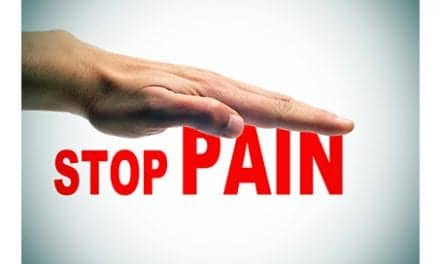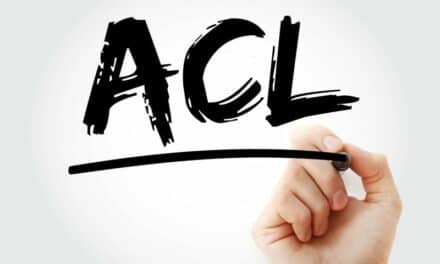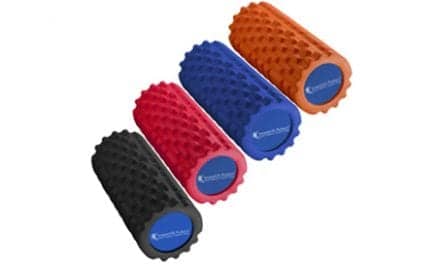By Jeffrey P. Foucrier, PT, DPT, OCS, CMTPT
With a rapidly growing body of literature about the complex nature of pain management and a plethora of treatment methodologies and modalities, it is sometimes difficult to ascertain the best possible plan of care for a patient affected by pain. The landscape of medicine has changed greatly in the past few years. Clinicians have seen an explosion in devices and “wearables” that track medical information. Likewise, social media and cloud-based softwares are being used as a means to track and analyze health data, while telemedicine has changed the way patients and primary providers communicate. Understanding the interplay between these advances in technology and pain-management practices is key to ensuring effective treatment strategies. This article reviews some of the latest research and technology for commonly used modalities in a therapeutic clinical setting for the management of pain.
Current methodologies in rehabilitative medicine highlight, when possible, retroactive treatment, as well as functional treatment versus symptomatic management.1-4 This, along with the identification of underlying pathologies followed by a multimodal plan of care, is supported to maximize therapeutic outcomes.1-4 This kind of comprehensive approach to care necessitates a collaborative use of different technologies based on current best practice, patient and provider education, ownership, and accountability.
Braces and Orthotics
Some of the most commonly used technologies to manage pain focus on the idea of joint immobilization, alignment, and/or biomechanical support. Research has shown that bracing products such as the Generation II knee brace from Össur, Reykjavik, Iceland, or Don Joy’s Osteoarthritis Knee Brace(s) from DJO Global, Vista, Calif, can offer functional improvements in proprioception, balance, and physical function, while also decreasing stiffness, pain, and drug dosage.5 Advances in pain management for achilles tendinopathies have begun to look at combining eccentric exercises with use of the AirHeel from DonJoy Inc to aide in soft-tissue healing and the reduction of heel pain.6 Other advances in bracing have focused on reducing the weight of braces and improving comfort, while offering functional support for soft tissue recovering from acute injuries, such as the Bac< line of products from UK-based Handsome Ltd.
Alternative technologies offering soft-tissue support include both rigid tapes, such as Leukotape and Elastotape, and elastic tapes such as Kinesio Tape, offered by Kinesio Holding Corp, and KT Tape from KT Health, Lindon, Utah. Rigid taping has been shown to offer clinically meaningful change in the management of chronic knee pain when a medial directed force is applied to a patella.7
[sidebar float=”right” width=”250″]Product Resources
ActiveWrap
activewrap.com
Ari-Med
www.ari-med.com
Battle Creek Equipment Company
battlecreekequipment.com
DJO Global
www.djoglobal.com
Sombra
www.sombrausa.com
Sore No More
sorenomoreusa.com
Southwest Technologies Inc
www.elastogel.com
Richmar
www.richmarweb.com
Zimmer MedizinSystems
www.zimmerusa.com[/sidebar]
Electrical Nerve Stimulation (ENS) Modalities
Since the early 1970s, ENS has been used as a modality to manage pain. However, despite its long history of use, research on the benefits of the modality has been inconclusive.8 Research supporting its use states that both transcutaneous electrical neural stimulation (TENS) and percutaneous electrical neural stimulation (PENS) may be effective treatment modalities for nonspecific chronic musculoskeletal pain. Additionally, applications of TENS may be a beneficial modality when treating neuropathic pain,9 as an adjunct modality in the treatment of hand rheumatoid arthritis,16 and pain associated with knee OA (as part of a multimodal plan of care lasting longer than 4 weeks).10 Newer technologies are incorporating ENS with bracing or heat, to offer multimodal therapeutic benefits. Among these technologies are the BioniCare System from Irvine, Calif-based VQ OrthoCare, and Active TENS from Empi from DJO Global.11
Other electrotherapy devices are the Winner ST EVO electrical stimulation unit from Chattanooga, Tenn-based Richmar, available in a four-channel and two-channel model. Both models are upgradable to a laser/light hybrid configuration and offer Quadpolar IFC, Pre Mod IFC, Russian, Hi Volt, and Microcurrent waveforms. Zimmer MedizinSystems, based in Irvine, Calif, also manufactures products in this category, including the TENS 5 device, designed to offer five modes of stimulation in a compact, pocket-sized unit.
Thermal Modalities
Heat and cold modalities are widely used in the treatment of musculoskeletal injuries and associated sequelae. Recent evidence indicates that when treating acute/subacute low-back pain, continuous low-level heat with products such as Elasto-Gel from Southwest Technologies Inc, North Kansas City, Mo, and Thermacare from Proctor and Gamble, and exercises significantly improve functional outcomes and reduce pain.12 Concurrently, the modality has been shown to be superior to Ibuprofen and Acetaminophen in the management of acute low back pain.13,14
Cryotherapy, another thermal modality, is thought to provide analgesic benefits in the treatment of acute soft-tissue injuries.15,16 Technological advances in cryotherapy have produced “Third Generation” modalities such as cTreatment from Waegnar and CTM 5000 from Ener-C, that offer controlled-temperature modulation that cools soft tissue to a specific level, continuously, for a prolonged time. Further benefits of these devices include self-adjusting temperature capabilities to avoid injury to the patient and no need to be filled/refilled with cold water or ice.17 Rounding out the options for heat/cold therapy products are the Thermaphore Deep Heat Therapy line of moist heat packs from Battle Creek Equipment Co, Freemont, Ind, which are available in a variety of sizes for use in addressing pain symptoms. Other options for this category of pain-managment solutions are the ActiveWrap line of reusable heat packs and cold packs, offered by ActiveWrap Inc, Irvine, Calif.
Topical Substances and Iontophoresis
Topical agents have been found to be an effective and safe non-medical treatment for pain management of hand, knee, and hip OA, as well as acute and chronic musculoskeletal and neuropathic pain caused by diabetes, malignancies, and trauma.18,19 These substances, which include anesthetics, NSAIDS, and counter-irritants, have been shown to have minimal side-effects, offer effective and controlled delivery to a specific target site, and improve patient acceptance and adherence to therapy as compared to oral drugs.18,19,20 Well-established technologies have allowed for the delivery of some of these substances through the skin (ie, iontophoresis/phonophoresis). Recent advances in medicine have allowed for the use of iontophoresis for the trans-dermal administration of long-lasting local anesthetics and anticonvulsants to manage pain.21,22 Medically, therapeutic ultrasound has also been suggested to improve the delivery of insulin transdermally.23 Although research is ongoing, technological advances in iontophoresis may even allow for noninvasive measurement of glucose blood levels through reverse-iontophoresis, such as a glucose monitoring patch.21,22
Among topical pain relief products on the market are gel pain relievers manufactured with natural formulas from Sombra Professional Therapy Products, Albuquerque, NM. Sombra offers a warm therapy gel, a cool therapy gel, and an ultrasound therapy gel. Other products in this category include Sore No More from Moab, Utah-based company Sore No More, and Flexall topical pain-relieving gel from Ari-Med Pharmaceuticals, Tempe, Ariz.
Alternative Technologies
A different technology, rooted in a long history of massage therapies, that is continuing to gain momentum in clinical practice to treat musculoskeletal pain is instrument-assisted soft tissue mobilization (ISTM).24 Recently, the associated concepts of soft tissue deformation, mechanical loading, and fibroblast production have come to the forefront of this modality.24-27 The ability to stimulate an acute inflammatory process in soft tissue is thought to promote healing in soft-tissue injuries, and has been found effective in patients with chronic tendonitis and tenodonosis, and those with chronic neck pain.24,27,28 Application of mechanical force through soft tissue is a common theme among methods like ASTYM, Graston, and Gua Sha, but the underlying pressures, direction of treatment, and frequencies of these methodologies vary.
Another form of instrumented-assisted manual therapy that has seen a sudden increase in clinical practice is Trigger Point Dry Needling (TDN) or Dry Needling (DN). Synonymous with Western Acupuncture, Medical Acupuncture, and intramuscular stimulation, it is being utilized to treat musculoskeletal pain and restore functional movement.29,30 During a TDN treatment, a solid-filament needle is inserted into soft tissue as a means to treat sites of hypersensitive and taut bands of skeletal muscle fibers, known as myofasical trigger points (MTrPs).29-32 Based on best evidence at this time, dry needling has been recommended to treat upper-extremity myofascial pain syndromes, including chronic whiplash. It has been suggested that when combined with exercise, functional outcomes and pain are significantly improved in these populations of patients.29,31
Low-Level Laser
Low-Level Laser therapy has been used as early as the 1970s to manage musculoskeletal pain.33 Although there has been some conflicting evidence regarding the benefits of low-level laser, there is recent indication to suggest these modalities may be beneficial in the management of chronic and acute neck pain, as well as chronic joint disorders, such as osteoarthritis and rheumatoid arthritis.34,35,36 Additionally, the benefits of low-level laser may be in its ability to act as an anti-inflammatory, which seems to be most effective at higher dosages.37
Conclusion
Available best evidence presented in this article highlights the importance of using a multimodal approach to care. The primary practitioner should consider other passive and active methodologies (ie, psychosocial, emotional, and mental support) and treatments (manual therapy/manipulations and exercise) to maximize homeopathic management. Application of these technologies may be limited by money, time, access, education, compliance, as well as variability between patients. However, as mentioned, a comprehensive approach to managing pain should incorporate patient education, and mutual ownership and accountability for functional outcomes to offer the best possible care. PTP
Jeffrey P. Foucrier PT, DPT, OCS, CMTPT, graduated from Regis University in 2011 with a doctorate in physical therapy and currently practices at Spooner Physical Therapy in Phoenix. He is an orthopedic-certified specialist through the American Board of Physical Therapy Specialists and has additional training as a Certified Myofascial Trigger Point Physical Therapist (CMTPT). Foucrier is also a certified ASTYM provider as well as a credentialed Clinical Instructor through the APTA. For more information, contact [email protected].
References
- Walsh NE, Brooks P, Hazes JM, et al. Standards of care for acute and chronic musculoskeletal pain: The bone and joint decade (2000-2010). Arch Phys Med Rehabil. 2008;89:1830-1845.
- Deardoff W, Rubin H, Scott D. Comprehensive multidisciplinary treatment of chroninc pain: a follow-up study of treated and non-treated groups. Pain. 1991;45:35-43.
- Flor H, Fydrich T, Turk D. Efficacy of multidisciplinary pain treatment centers: a meta-analytic review. Pain. 1992;49:221-230.
- Pfingsten M, Hildebrandt J, Leibing E, Franz C, Saur P. Effectiveness of a multimodal treatment program for chronic low-back pain. Pain. 1997:73(1):77-85.
- Raja K, Dewan N. Efficacy of knee braces and? foot orthoses in conservative management of knee osteoarthritis: A systematic review. Am J Phys Med Rehabil. 2011;90:247-262.
- Knobloch K, Schreibmueller L, Longo UG, Vogt PM. Eccentric exercises for the management of tendinopathy of the main body of the Achilles tendon with or without the AirHeel Brace. A randomized controlled trial. A: Effects on pain and microcirculation. Disabil Rehabil. 2008;30,(20-22):1685-1691.
- Warden S, Hinman RS, Watson MA Jr, Alvin KG, Bialocerkowski AE, Crossley KM. Patellar taping and bracing for the treatment of chronic knee pain: A systematic review and meta-analysis. Arthritis Rheum. 2008;59,1:73-83.
- Johnson M, Martinson M. Efficacy of electrical nerve stimulation for chronic musculoskeletal pain: A meta-analysis of randomized controlled trials. Pain. 2007;130:157-165.
- Baron R, Binder A, Wasner G. Neuropathic pain: diagnosis, pathophysiological mechanisms and treatment. Lancet Neurol. 2010;9:807-819.
- Brosseau L, Judd MG, Marchand S, et al. Transcutaneous electrical nerve stimulation (TENS) for the treatment of rheumatoid arthritis in the hand. Cochrane Database Syst Rev. 2003;(3):CD004377.
- Osiri M, Welch V, Brosseau L, et al. Transcutaneous electrical nerve stimulation for knee osteoarthritis. Cochrane Database Syst Rev. 2000;(4):CD002823.
- Hunferford, Maclaughlin EJ, Mines CM, et al. Synergistic effect of using a transcutaneous electrical joint stimulator and an unloading brace in treating osteoarthritis of the knee. Am J Orthop. 2013;42(10):456-463.
- Mayer JM, Ralph L, Look M, et al. Treating acute low back pain with continuous low-level hear wrap therapy and/or exercise: a randomized controlled trial. Spine J. 2005;5:395-403.
- French SD, Cameron M, Walker BF, Reggars JW, Esterman AJ. A Cochrane review of superficial heat or cold for low back pain. Spine. 2006;31(9):998-1006.
- Nadler SF, Steiner DJ, Erasala GN, et al. Continuous low-level heat wrap therapy provides more efficacy than Ibuprofen and Acetaminophen for acute low back pain. Spine. 2002;27(10):1012-1017.
- Algafly A, George K. The effect of cryotherapy on nerve conduction velocity, pain threshold and pain tolerance. Br J Sports Med. 2007;41:365-369.
- Airakinsen O et al. Efficacy of cold gel for soft tissue injuries: a prospective randomized double-blinded trial. Am J Sports Med. 2003;31(5):680-684.
- Thienpont E. Does advanced cryotherapy reduce pain and narcotic consumption after Knee arthroplasty? Clin Orthop Relat Res. 2014;472:3417-3423.
- Leon-Casasola O. Multimodal approaches to the management of neuropathic pain: the role of topical analgesia. J Pain Symptom Manage. 2007;33(3):365-364.
- Stanos S. Topical agents for the management of musculoskeletal pain. J Pain Symptom Manage. 2007;33(3):365-364.
- Jorge L, Feres C, Teles V. Topical preparations for pain relief: efficacy and patient adherence. J Pain Res. 2011;4:11-24.
- Brown M. Dermal and transdermal drug delivery systems: current and future prospects. Drug Delivery. 2006;13:175-187.
- Pittler, M, Ernst E. Complementary therapies for neuropathic and neuralgic pain: systematic review. Clin J Pain. 2008;24(8):731-733.
- Jabbari N, Asghari MH, Ahmadian H, Mikaili P. Developing a commercial air ultrasonic ceramic transducer to transdermal insulin delivery. J Med Signals Sens. 2015: 5,2: 117-122.
- Lundebreg T, Nordemar R, Ottoson D. Pain alleviation by vibratory stimulation. Pain. 1984;20:24-44.
- Hammer WI. The effect of mechanical load on degenerated soft tissue. J Bodyw Mov Ther. 2008;12:246-256.
- Gehlsen GM, Ganion LR, Helfst R. Fibroblast responses to variation in soft tissue mobilization pressure. Med Sci Sports Exerc. 1999;31(4):531-535.
- Davidson CJ, Ganion LR, Gehlsen GM, Verhoestra B, Roepke JE, Sevier TL. Rat Tendon morphologic and functional changes resulting from soft-tissue mobilization. Med Sci Sport Exerc. 1997;29(3):313-319.
- Simmonds N, Miller P, Gemmell H. A theoretical framework for the role of fascia in manual therapy. J Bodyw Mov Ther. 2012;16:83-93.
- Braun M, Schwickert M, Nielsen A, et al. Effectiveness of traditional Chinese “gua sha” therapy in patients with chronic neck pain: a randomized controlled trial. Pain Med. 2011;12(3):362-369.
- Kalichman L, Vulfsons S. Dry needling in the management of musculoskeletal pain. J Am Board Fam Med. 2010;23:640-646.
- Srbely JZ, Dickey JP, Lee D, Lowerison M. Dry needle stimulation of myofascial trigger points evokes segmental anti-nociceptive effects. J Rehabil Med. 2010;42(5):463-468.
- Kietrys DM, Palombaro KM, Azzaretto E, et al. Effectivenes of dry needling for upper-quarter myofascial pain: a systematic review and meta-analysis. J Orthop Sports Phys Ther. 2013;43(9):620-634.
- Tekin L, Akarsu S, Durmus O, Cakar E, Dincer U, Kiralp MZ. The effect of dry needling in the treatment of myofascial pain syndrome: a randomized double-blinded placebo-controlled trial. Clin Rheumatol. 2013;32(3):309-315.
- Gam A, Thorsen H, Lonnberg F. The effect of low-level laser therapy on musculoskeletal pain: a meta-analysis. Pain. 1993;52:63-66.
- Bjordal JM, Couppé C, Chow RT, Tunér J, Ljunggren EA. A Systematic review of low-level laser therapy with location-specific doses for pain from chronic joint disorders. Aust J Physiother. 2003;49(2):107-116.
- Emshoff R. Bösch R, Pümpel E, Schöning H, Strobi H. Low-level laser therapy for treatment of temporomandibular joint pain: a double-blind and placebo-controlled trial. Oral Surg Oral Med Oral Pathol Oral Radiol Endod. 2008;105(4):452-456.
- Chow RT, Johnson MI, Lopes-Martins RA, Bjordal JM. Efficacy of low-level laser therapy in the management of pain: a systematic review and meta-analysis of randomized placebo or active-treatment controlled trial. Lancet. 2009;374(9705):1897-1908.
- Bjordal JM, Johnson MI, Iverson V, Aimbire F, Lopes-Martins RA. Low-level laser therapy in acute pain: a systematic review of possible mechanisms of action and clinical effects in randomized placebo-controlled trials. Photomed Laser Surg. 2006;2(24):158-168.






